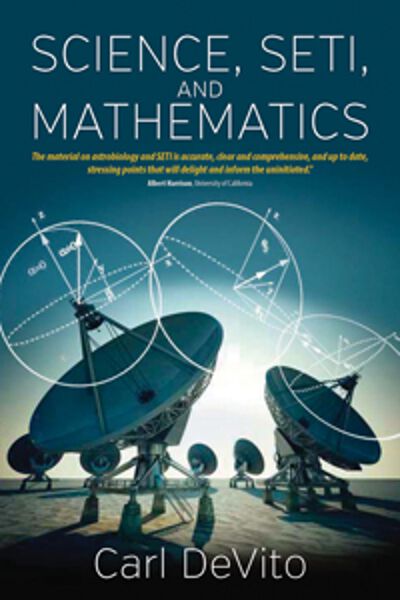If there is extra-terrestrial life in the Universe, how might it communicate? In Science, SETI, and Mathematics, to be published this month, author Carl DeVito seeks to answer this question in a conversational way, explaining the role of mathematics in the Search for Extra-Terrestrial Intelligence (SETI). DeVito explores the science and history behind the search, and shares the many questions associated with it, especially those regarding language and communication.
_________________________________
 The early workers in the search for extra-terrestrial intelligence were concerned with the technical problems of sending and receiving radio signals across inter-stellar distances.
The early workers in the search for extra-terrestrial intelligence were concerned with the technical problems of sending and receiving radio signals across inter-stellar distances.
Slowly, however, the deeper questions inherent in this endeavor rose to prominence: questions about the nature of intelligence, the nature of language, and the philosophical/psychological motivation behind this search.
In recent years these questions have attracted scholars from a remarkably wide variety of disciplines. Several recent books contain articles written by philosophers, psychologists, anthropologists, archaeologists, and even artists and religious scholars. These scholars bring valuable insight into the many deep problems posed by SETI.
As we broaden the scope of our discussions, however, it is important to remember the realities of this endeavor. Our method of searching, the radio telescope, restricts the societies we might contact to those capable of sending electro-magnetic signals over inter-stellar distances. Such a society must have an advanced technology and some knowledge of science. Thus the insights of astronomers, physicists and mathematicians are still relevant and provide a frame work for ongoing research.
This book is intended for my colleagues in the humanistic and natural sciences who share my interest in the search for extra-terrestrial intelligence (SETI). The presentation, however, is relaxed and conversational and so the book might appeal to an even wider audience.
I try to bring these insights to the attention of those new to the field by discussing the history of SETI, the science on which it is based, and the unique role mathematics plays in this endeavor. Since I am writing for a very wide audience, an audience of people with very diverse backgrounds, I have focused on ideas and avoided mathematical symbolism and technical jargon.
No prior knowledge of mathematics or physical science is assumed.
______________________________
Carl L. DeVito, a member of the emeritus faculty of the Department of Mathematics at the University of Arizona, has contributed to several edited volumes on cosmic communication. His other scientific work includes many papers on pure and applied mathematics and three books: Harmonic Analysis—A Gentle Introduction (2006), Functional Analysis (1978), and Functional Analysis and Linear Operator Theory (1990).
